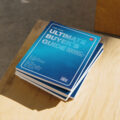Features March 08, 2023 By Richard Tan
How Women Drove the Automotive Industry Forward

As we celebrate Women’s Day, we take a look back at some names that have shaped the world of cars and motoring for the better. Here are some of the most important female figures in automotive history.
echo adrotate_group(19);1. Mary Anderson and Charlotte Bridgewater

The first windscreen wiper was invented by Mary Anderson. She came up with the idea after noticing trolley drivers opening their windows and sometimes stepping out of the vehicle to wipe their windshields in rainy weather. To address this issue, she designed a manual lever that could be operated from inside the vehicle to wipe the windscreen. This invention was patented in 1903 and has since been widely used throughout the automotive industry.
echo adrotate_group(2);In 1917, Charlotte Bridgewater improved upon Mary Anderson’s manual windscreen wiper by creating an electronic version, which she subsequently patented. Today, it is a standard component of all road legal cars
2. Katharine Blodgett

Katharine Blodgett, a physicist and chemist, holds the distinction of being the first woman to receive a PhD in Physics from Cambridge University in 1926. She worked at the General Electric Research Lab in Schenectady, New York, where she developed methods for working with monomolecular coatings on glass. Her work led to significant improvements in the glass used in eyeglasses, camera lenses, de-icing materials for aircraft, and poison gas absorbents, and most notably, car windscreens.
One of Blodgett’s most notable contributions was the invention of non-reflecting glass in 1938, which serves as the basis for the technology used in car windscreens worldwide. This type of glass was dubbed “invisible glass” by GE because it lacks the reflective qualities that are present in ordinary glass due to the way light rays interact with it.
3. Dorothée Pullinger

Vintage Fiat 501 (1924) in classic car rally Raduno auto e moto d’epoca on May 2, 2015 in Pieve Cesato, Faenza, RA, Italy
Dorothée Pullinger is recognized as the first woman to design a car specifically with women in mind. She received engineering training from her father at his car factory and worked for Vickers during World War I.
Pullinger’s design, the Galloway 10/20, was a combination of her father’s designs and the Fiat 501. It was considerably lighter and smaller than other vehicles available at the time. In some models of the Galloway, she placed the gears in the middle of the vehicle, raised the seats, added more storage space, lowered the dashboard, and made the steering wheel smaller. All of these modifications were aimed at making driving more accessible for women.
4. Suzanne Vanderbilt

Suzanne Vanderbilt began her career at General Motors as a Junior Designer, along with five other women. The group was hired to design the interiors of certain models, in an attempt to appeal to the company’s growing female customer base.
Vanderbilt remained with GM for the following 23 years, ultimately becoming the chief designer for Chevrolet. She also patented three designs during her career: an inflatable seat back, a safety switch for automotive panels, and a motorcycle helmet design. Vanderbilt is most well-known for her female-oriented designs and pioneering patents, which continue to influence the design of comfortable and safe vehicle components today.
5. Mimi Vandermolen

Mimi Vandermolen was a highly regarded designer at Ford during the 1980s and 1990s. She was in charge of the design of the second-generation small sports coupe, the 1993 Ford Probe, from start to finish. To help her team improve the driving experience for women, she went so far as to ask her male designers to wear fake fingernails and even skirts so that they can gain insight into the needs of female drivers.
6. Joan Newton Cuneo

Portrait of female racecar driver
Joan Newton Cuneo is recognized as the first female race car driver, achieving remarkable success and breaking records within just a few years of learning to drive. She participated in the Gilden Tour, a 1,355-mile drive from St Louis Missouri to New York City, but was banned from ascending the road up New Hampshire’s Mount Washington due to the winding road being classed as too dangerous for women.
Despite this setback, she went on to race at some of the biggest events in America, often competing against some of the fastest men and winning many races. Her success eventually made male drivers nervous and the American Automobile Association banned female drivers from competing in their sanctioned competitions in 1909. Nonetheless, Joan continued to drive and in 1911 she set the women’s speed record of 112 mph on the Long Island Motor Parkway. In addition to her racing achievements, she was also a competent mechanic and she worked on her own vehicles.






























